Tire Maintenance & Safety
Free shipping
Best price guarantee
Special pricing
Financing with Resolve
Easy returns
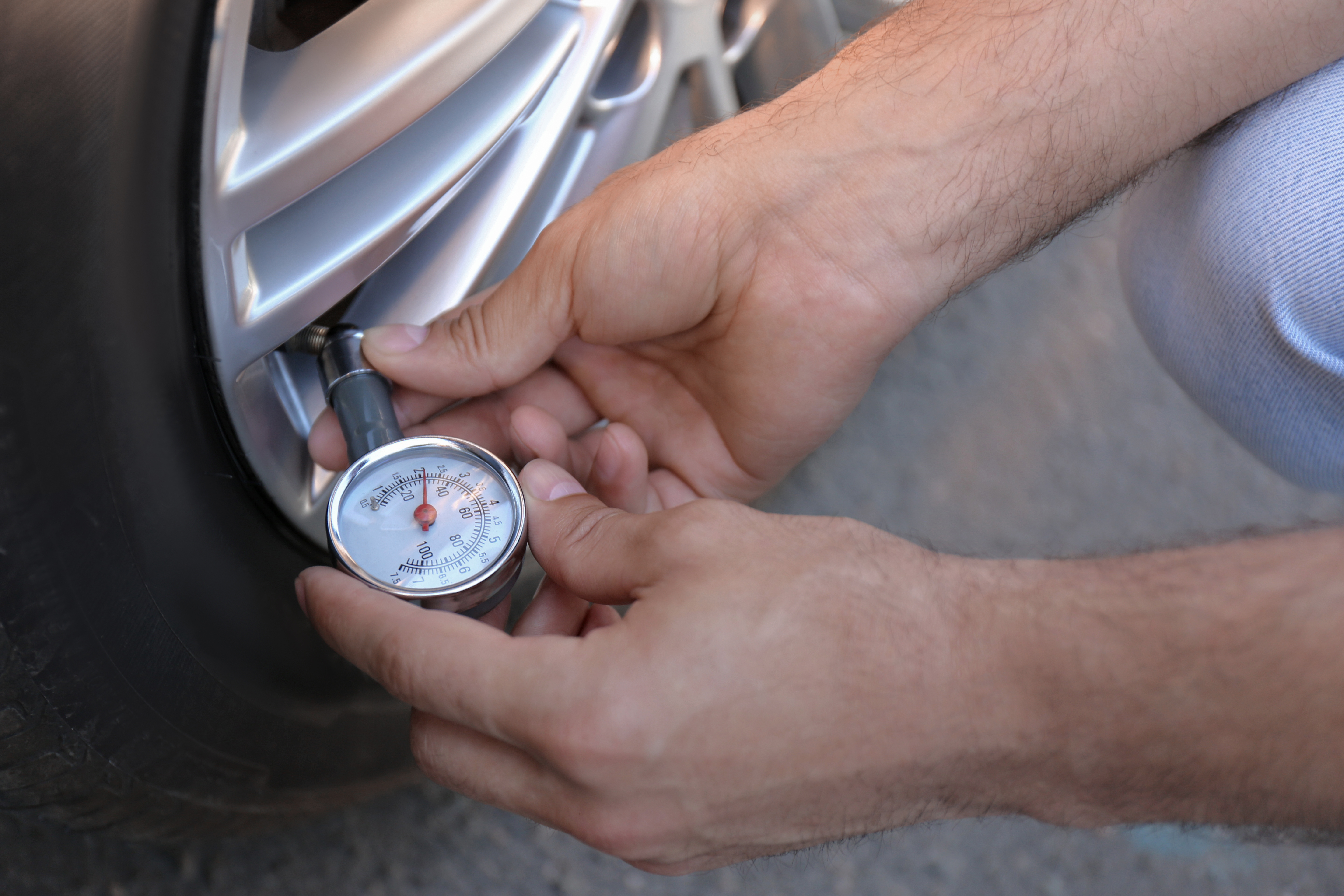
Maintaining proper tire pressure is essential for ensuring a safe and comfortable driving experience. Tire inflation pressure plays a crucial role in your vehicle's handling, fuel efficiency, and tire longevity.
Checking your tire pressure regularly is a simple yet often overlooked task that can prevent potential issues down the road. By understanding the importance of tire inflation pressure and how to maintain it, you can maximize your vehicle's performance and avoid costly repairs.
In this article, we'll dive into the basics of tire inflation pressure, including what it is, why it matters, and how to keep your tires properly inflated for optimal safety and performance.
What is tire inflation pressure?
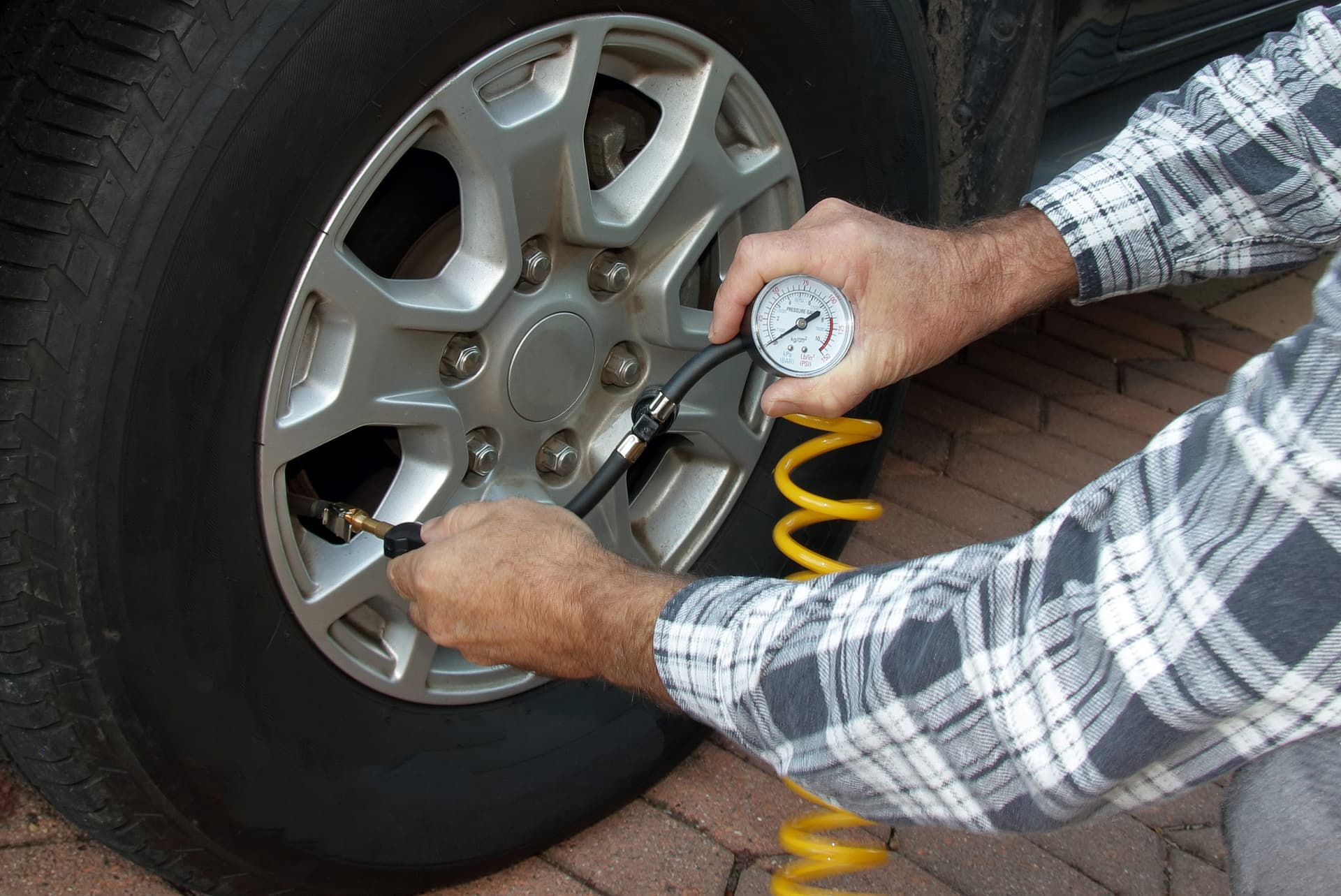
Tire inflation pressure refers to the amount of air inside your tires, measured in pounds per square inch (PSI). This pressure is essential for supporting your vehicle's weight, maintaining proper handling, and ensuring even tire wear. The recommended tire pressure for your specific vehicle can be found in the owner's manual or on a sticker inside the driver's side door jamb.
It's important to note that the maximum pressure listed on your tire's sidewall is not the recommended pressure for your vehicle. This value represents the tire's maximum load-carrying capacity and should not be used as a guideline for everyday driving. Instead, always refer to your vehicle's recommended tire pressure for optimal performance and safety.
Maintaining the correct tire pressure is crucial for several reasons:
- Safety: Properly inflated tires provide better handling, shorter braking distances, and improved stability, especially during emergency maneuvers.
- Fuel efficiency: Underinflated tires increase rolling resistance, which can lead to reduced fuel economy. By keeping your tires at the recommended pressure, you can save money at the pump.
- Tire longevity: Incorrect tire pressure can cause uneven or accelerated tread wear, reducing the lifespan of your tires. Maintaining proper inflation helps ensure your tires wear evenly and last longer.
To check your tire pressure, use a reliable tire pressure gauge when your tires are cold—ideally, before driving or after the vehicle has been parked for a few hours. Compare the measured pressure to the recommended value and adjust as needed. It's a good idea to check your tire pressure at least once a month and before long trips.
Remember, tire pressure can fluctuate due to changes in temperature, altitude, and driving conditions. By regularly monitoring and maintaining proper tire inflation pressure, you can enjoy a safer, more efficient, and more comfortable driving experience while extending the life of your tires.
Proper tire inflation pressure is crucial to the overall performance and reliability of your vehicle. It ensures that tires maintain the right balance and grip on the road, which is essential for effective maneuverability and driving precision. When tire pressure deviates from the recommended levels, various performance issues can arise.
Underinflation can significantly compromise vehicle dynamics. Tires with insufficient air tend to deform more under load, which can cause excess heat buildup and potential structural failures. This deformation leads to decreased steering responsiveness and longer stopping distances, making it difficult to navigate emergency situations. Additionally, uneven weight distribution on underinflated tires causes irregular tread wear, shortening the tire's lifespan.
Conversely, overinflation poses its own challenges. Tires with too much air become overly firm, reducing their ability to cushion against road impacts. This rigidity can result in an uncomfortable ride and diminished grip, particularly on slippery or bumpy surfaces. The smaller contact area with the road leads to concentrated tread wear in the center, reducing overall tire durability and necessitating earlier replacement.
Keeping tires at their recommended pressure levels also enhances fuel efficiency. Proper inflation minimizes rolling resistance, allowing the vehicle to move with less effort from the engine. This optimization can lead to greater fuel savings over time. By consistently checking tire pressure and maintaining it as specified, you ensure a safer, smoother drive while also promoting longer-lasting tires and better fuel economy.
How to check your tire pressure
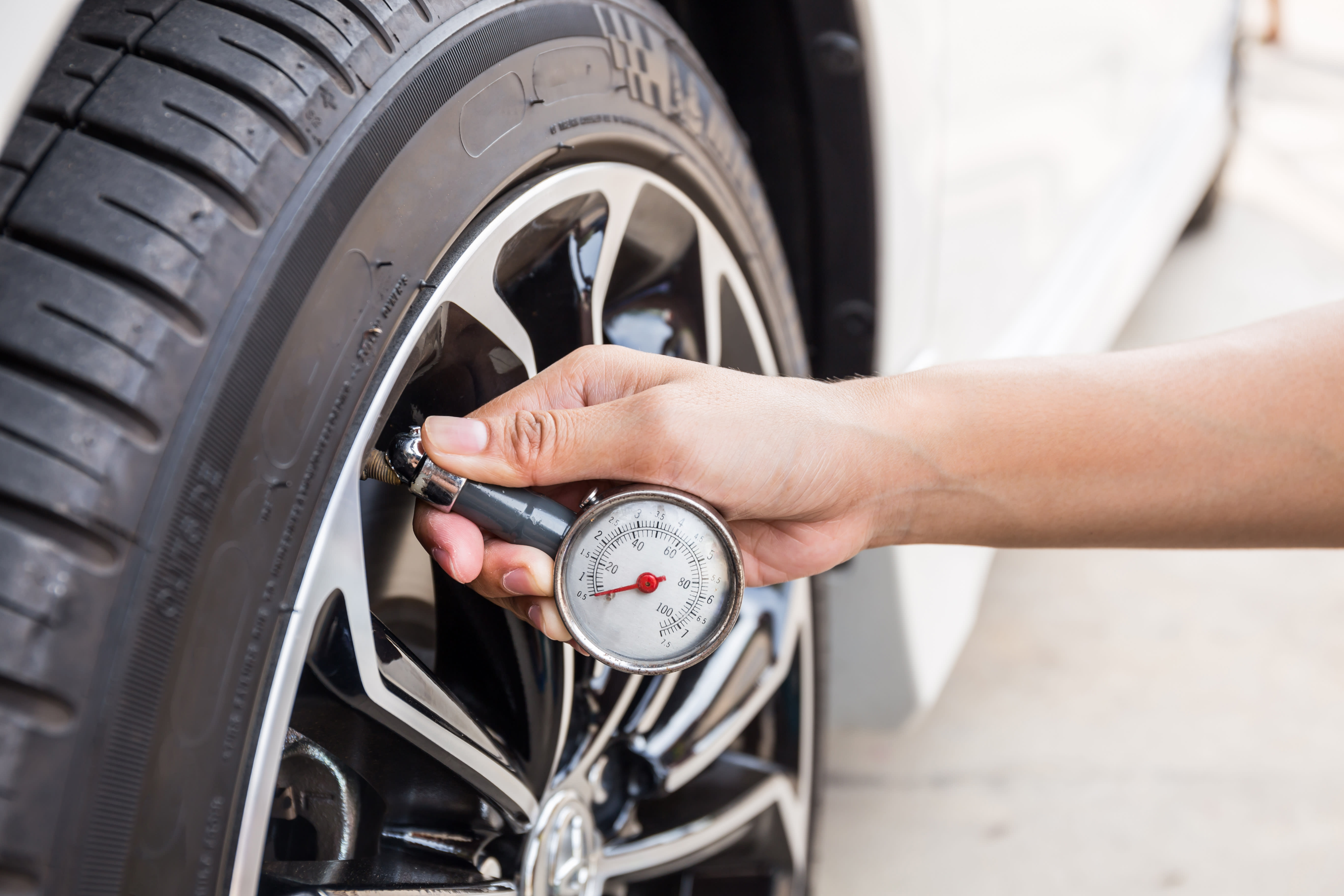
Regularly checking tire pressure is a straightforward process that can prevent a host of potential issues. Begin by ensuring your vehicle is parked on a flat surface to get the most precise readings. For the most accurate results, measure tire pressure first thing in the morning or after the vehicle has been stationary in the shade for a few hours. Tire pressure can vary after driving due to heat buildup, which may give a false reading.
To measure your tire pressure, you'll need a reliable tire pressure gauge, available in digital or analog forms. Digital gauges are often praised for their precision and ease of use. Start by removing the valve cap from the tire's valve stem. Press the gauge onto the valve stem until the sound of escaping air stops—this indicates a proper seal. The gauge will display a pressure reading in PSI (pounds per square inch).
Once you have the reading, refer to the recommended tire pressure indicated on a sticker typically located inside the driver's side door jamb. If adjustments are necessary:
- Increase Pressure: If the tire pressure is below the recommended level, use an air compressor to add air. Attach the compressor to the valve stem and inflate the tire to the desired PSI.
- Decrease Pressure: If the tire is overinflated, release air by pressing down on the center pin inside the valve stem with the gauge or a small tool until the correct pressure is achieved.
After making adjustments, double-check the pressure to ensure it matches the recommended level. Securely replace the valve cap to prevent dirt from entering the valve. Consistent monitoring and maintenance of tire pressure can significantly enhance your vehicle's safety and efficiency.
Factors that affect tire pressure
Tire pressure is dynamic, influenced by various environmental and mechanical factors. Temperature shifts are a primary factor—when temperatures fall, the air inside tires contracts, leading to lower pressure. This contraction is noticeable during transitions to colder months. On the flip side, warmer temperatures cause air to expand, potentially raising tire pressure. Thus, regular checks during extreme temperature swings ensure optimal tire performance.
Altitude impacts tire pressure as well. At higher elevations, lower atmospheric pressure allows tire air to expand, leading to a decrease in pressure. Before ascending to higher altitudes, it's wise to inspect and adjust tire pressure to accommodate these changes, maintaining safety and handling in mountainous terrains.
The condition and age of tires also influence their pressure retention. Over time, tire materials can degrade, increasing vulnerability to leaks. Older tires or those with visible damage, such as cuts or punctures, may lose air more rapidly. Regular inspections for wear and timely pressure checks can help detect issues early, extending tire life.
Driving habits and road conditions further affect tire pressure stability. Aggressive driving, involving sudden acceleration and braking, can generate excess heat, altering tire pressure. Similarly, rough road conditions can flex tire structures, impacting pressure consistency. By adopting smoother driving techniques and avoiding poor road conditions, you can help sustain steady tire pressure.
How to adjust your tire pressure
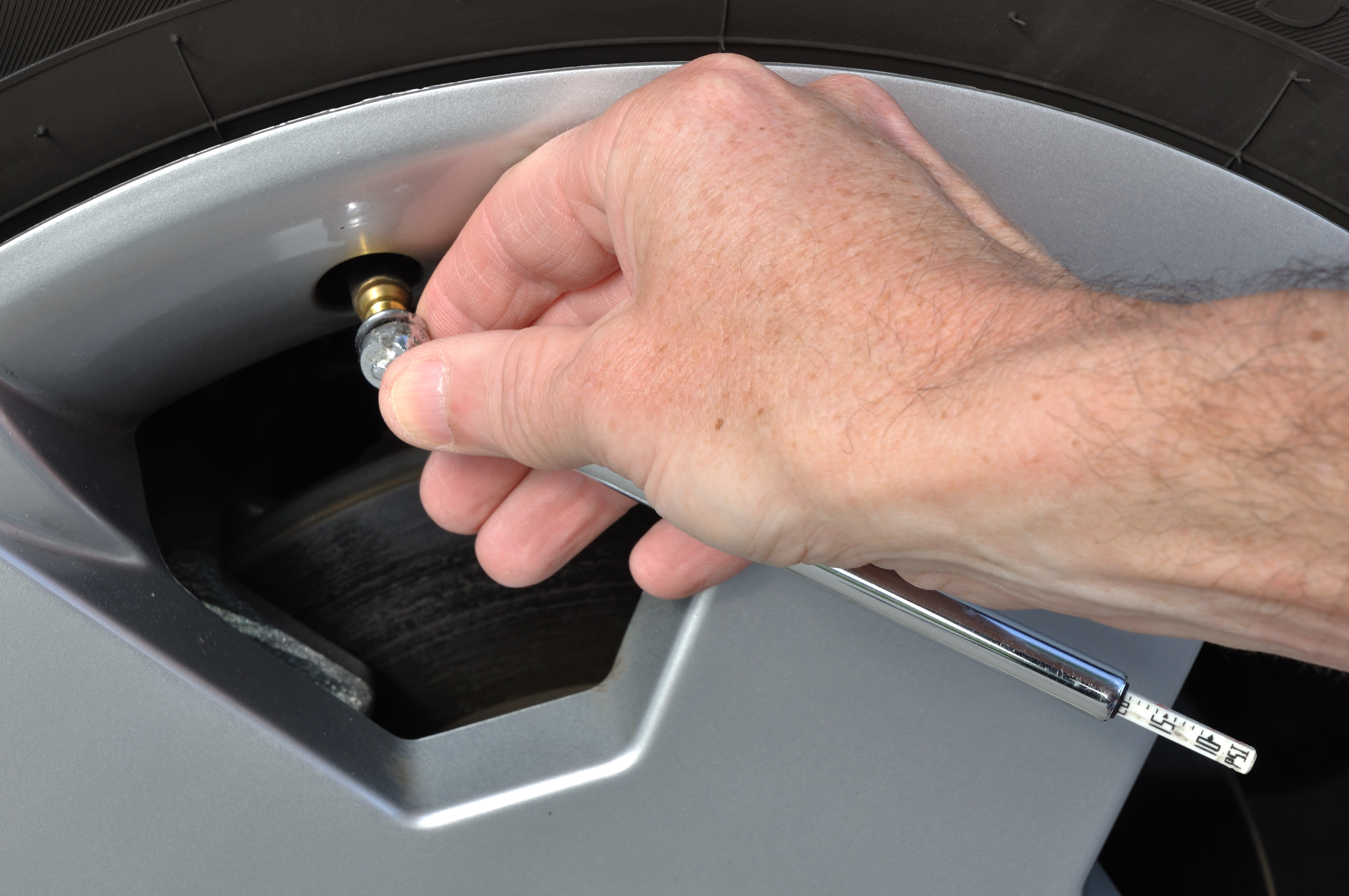
Proper tire pressure adjustment is essential for maintaining vehicle performance and safety. Begin by preparing a quality tire pressure gauge and locate an air pump station nearby. These resources ensure precision in setting your tires to the optimal PSI.
For adding air to a tire, align the air pump's nozzle with the tire's valve stem and proceed in brief intervals. Check the pressure intermittently to prevent overinflation. Once the desired PSI is achieved, detach the nozzle and confirm the pressure with your gauge for verification. This step ensures that the pressure remains consistent after adjustment.
In situations where the tire is overinflated, use a pointed tool or the back of a pen to tap the valve stem gently, releasing air in short intervals. Continuously monitor the pressure to avoid excessive deflation. After reaching the correct pressure, place the valve cap back on to maintain the tire's integrity against environmental factors. Regular execution of these steps will help preserve optimal tire pressure, contributing to safer and more efficient driving.
The dangers of driving with incorrect tire pressure
Driving with incorrect tire pressure introduces several risks that can compromise safety and vehicle performance. Tires that are not inflated to the correct pressure are more prone to structural damage. Underinflated tires tend to deform more, leading to increased friction with the road surface. This friction generates excess heat, which can weaken the tire’s foundation and potentially lead to a failure. Over time, this can result in a sudden breakdown, especially during prolonged drives or when carrying heavy loads.
Overinflated tires, while appearing more resilient, can also be problematic. They are less capable of cushioning impacts from the road. When tires are too firm, they cannot effectively absorb shocks from potholes or road debris, increasing the likelihood of a blowout. Such an event at high speeds can cause the vehicle to swerve unexpectedly, posing a danger to the driver and other road users.
Incorrect tire pressure further affects how a vehicle handles and brakes. Underinflated tires create more rolling resistance, which can impair precise steering and extend stopping distances. This makes it challenging to maneuver the vehicle quickly in critical situations. Overinflated tires reduce the contact area with the road, diminishing traction and stability. This decreased grip can make the vehicle prone to skids, particularly on wet or icy surfaces, where maintaining control is vital.
Tips for maintaining proper tire inflation pressure
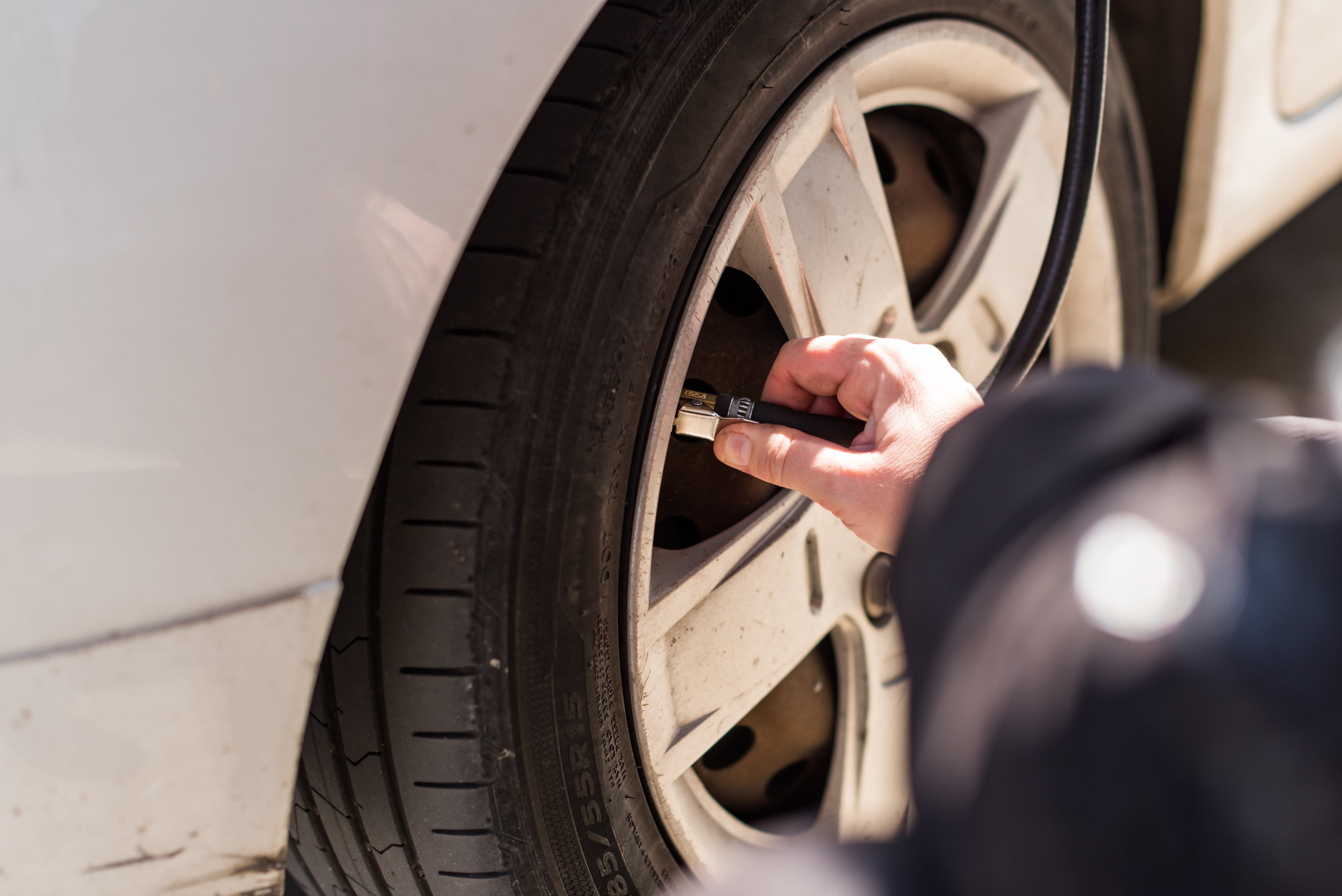
To maintain proper tire inflation pressure, adopt a routine of consistent monitoring and proactive measures. Make it a habit to inspect your tire pressure routinely, especially before extended travels or when the seasons change. This practice allows you to catch any fluctuations early, ensuring optimal vehicle performance.
Equipping your vehicle with a dependable tire pressure gauge and an air pump is a wise decision. These tools empower you to address pressure discrepancies wherever you are, reducing the risk of unexpected delays. In case of emergencies, having these tools on hand can prevent further complications and enhance safety.
Beyond regular checks, tire care encompasses more than just maintaining pressure. Schedule tire rotations and balancing as advised by the manufacturer to promote even tread wear and prolong tire lifespan. If tires exhibit significant damage or have reached their service limit, timely replacement is essential for maintaining safety and performance. Additionally, consider nitrogen inflation for its ability to maintain pressure stability and potentially improve fuel efficiency over time.
By understanding tire inflation pressure and its impact on your vehicle's performance, you can ensure a safer, more comfortable driving experience while maximizing fuel efficiency and tire longevity. Remember to check your tire pressure regularly and maintain the recommended levels for optimal results. When it's time to replace your tires, shop for tires online with us and find the best deals to keep you rolling smoothly.
Yes, the tire pressure does affect the suspension performance. In case of higher inflation pressure, the tires become stiffer and the shocks are passed to the suspension system. Similarly, lower inflation pressure also strains the suspension system. Tires act like mini shock absorbers and provide additional cushioning to the passengers sitting inside the vehicle for improved comfort and at the same time absorb the direct shock impact that’s passed to the suspension system.
Typically, cars require a tire pressure of 30 to 35 PSI. However, it is advisable to refer to the recommended PSI level for your car that is mentioned in the owner’s manual of your vehicle. Usually, the recommended PSI level that’s mentioned in the owner’s manual is applicable year-round and isn’t distinct for summer or winter.
Ready to find the perfect tires?
Search By